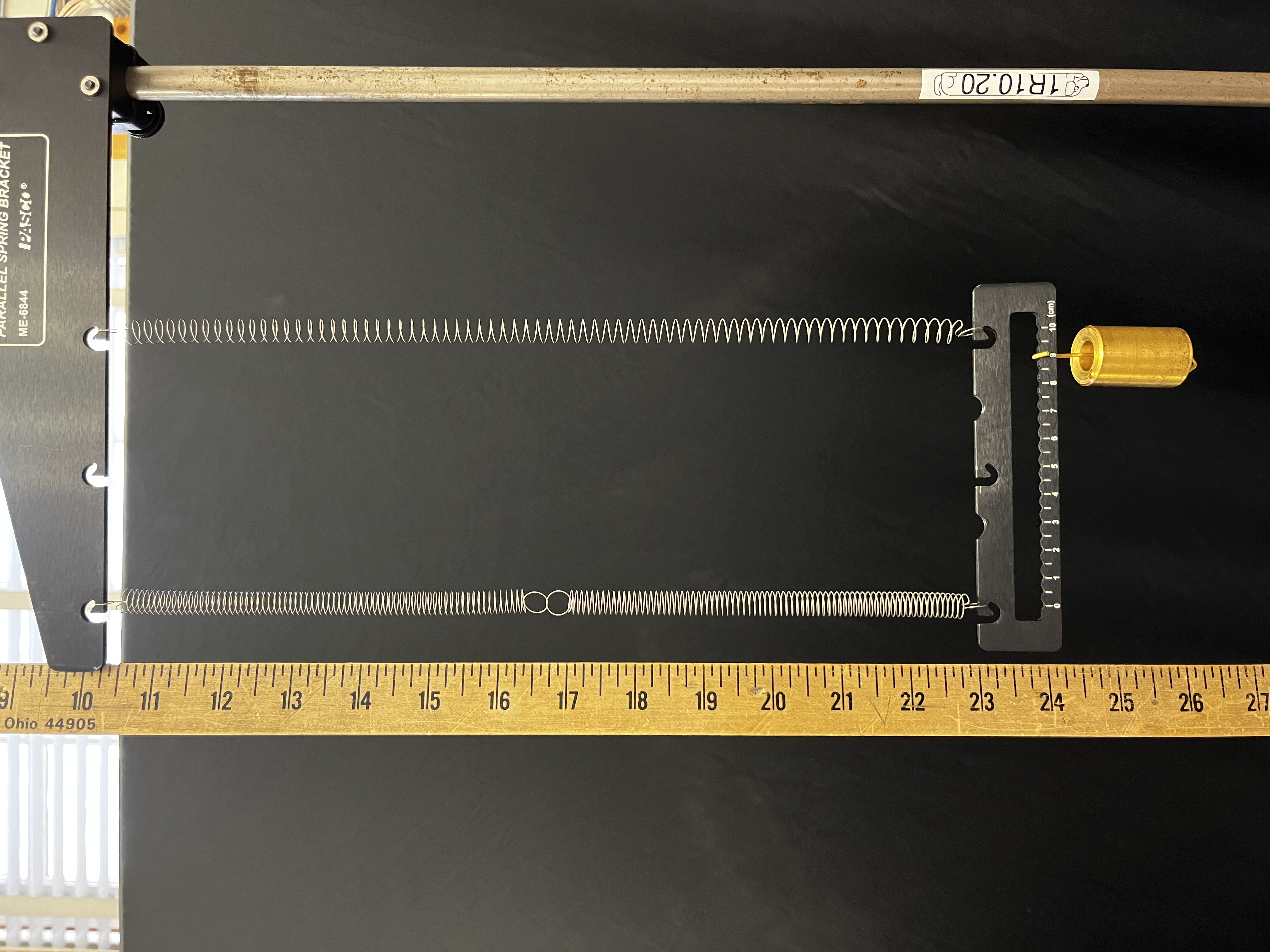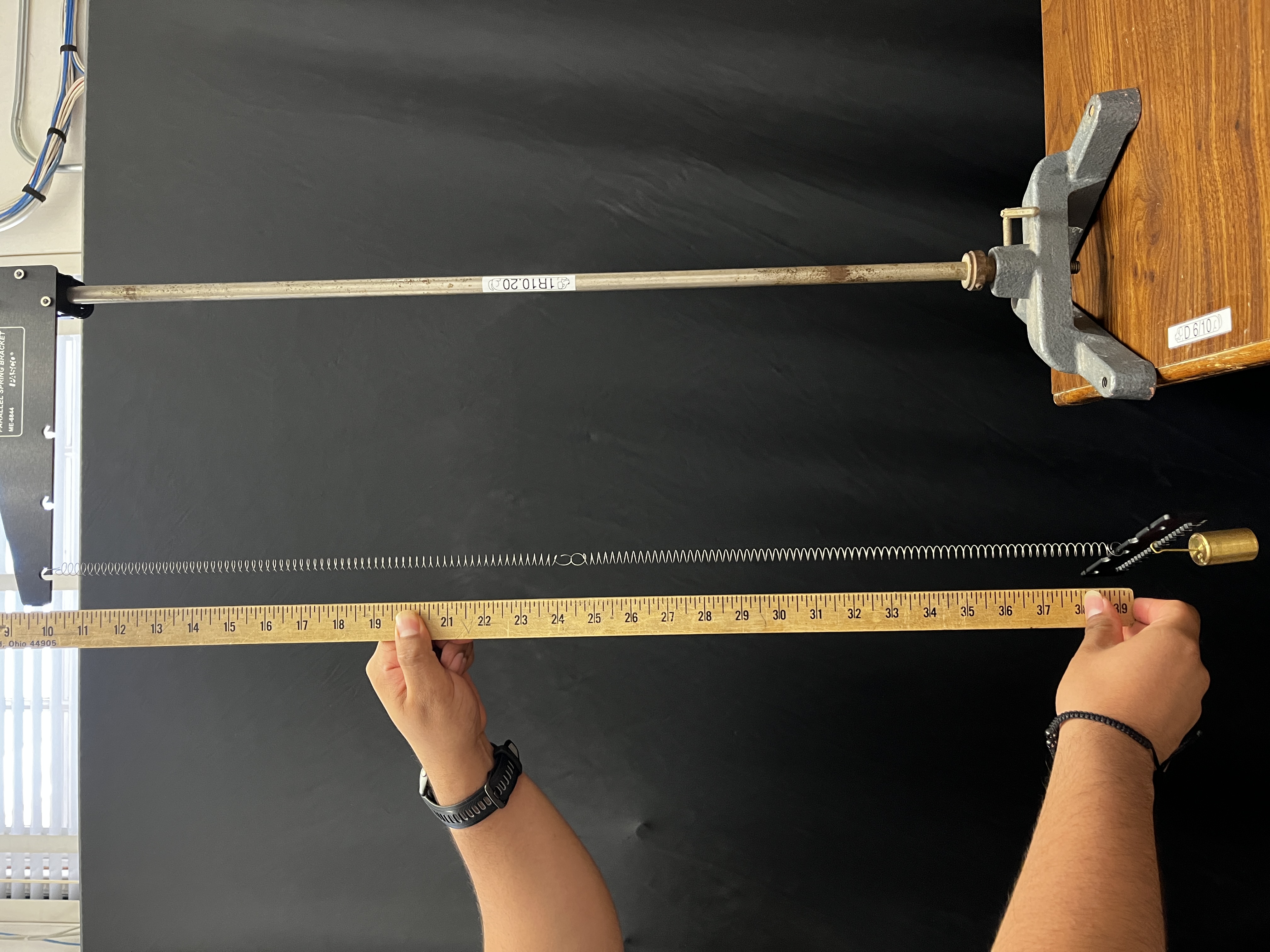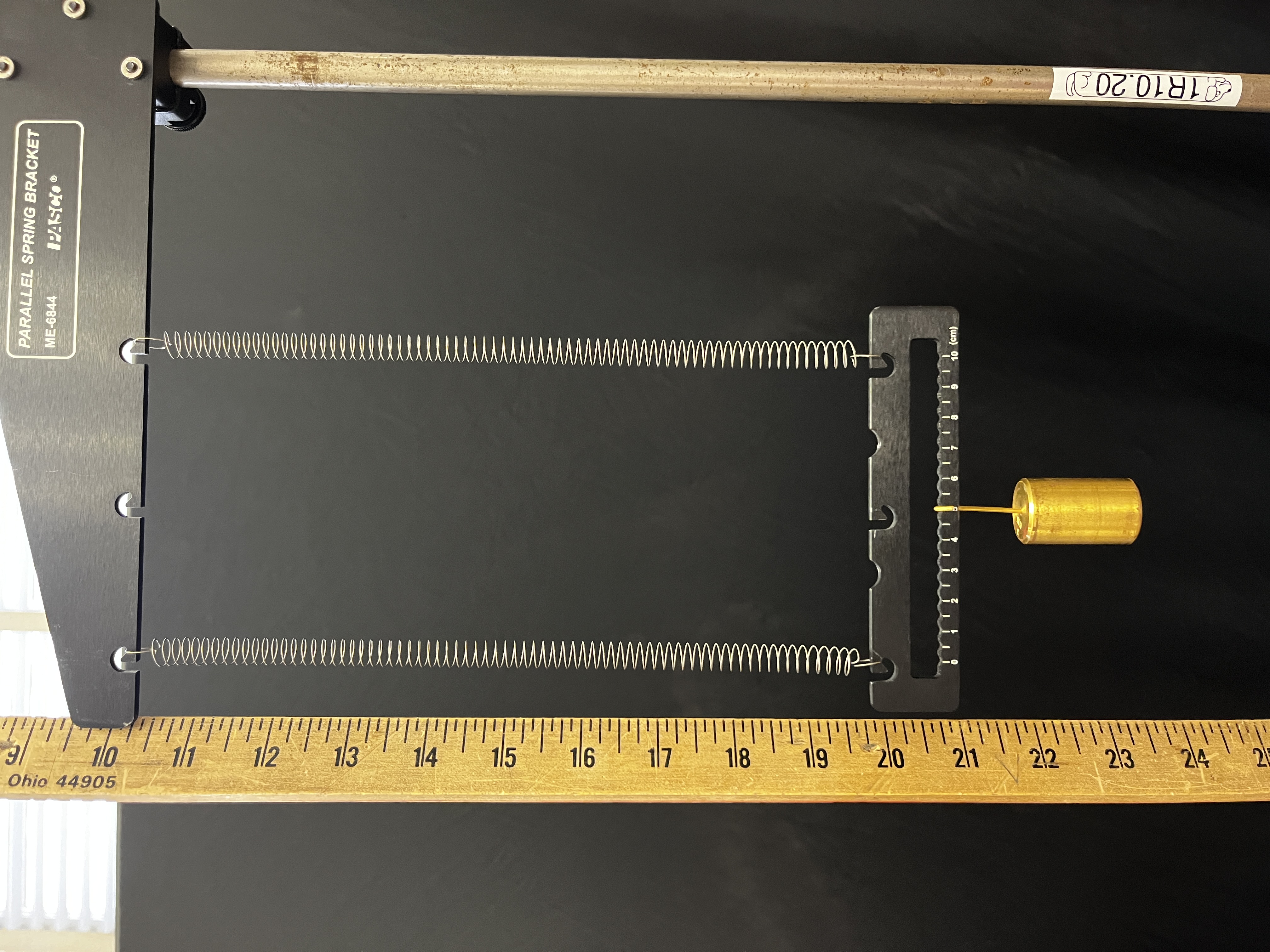1R10.20 • Series and Parallel Springs
Location: Cabinet 4
Please leave a note of which experiment setup is requested.
Experiment 1: Springs in series.
Concepts Conveyed:
- In a series springs system, the inverse of the effective spring constant is the sum of the inverse of the original spring constants.
- Spring force has a linear relationship to the displacement and the spring constant.
- With the same weight, when the effective spring constant decreases by half, the displacement will double.
- In a series springs system, the displacement of each spring in the system is the same as when it is stretched alone. The total displacement for the system is the sum of all displacements of springs.
Experiment 2: Springs in parallel.
Concepts Conveyed:
- In a parallel springs system, the effective spring constant is the combination of the original two spring constants.
- Spring force has a linear relationship to the displacement and the spring constant.
- In a parallel springs system, the sum of all springs’ displacements is the same as the displacement of one spring stretched alone.
Experiment 3: Combined spring system.

Concepts Conveyed:
- On the left side, the effective spring constant follows the rule of series springs.
- For the entire system, the effective spring constant follows the rule of parallel springs.
- With the different spring forces on each side, the mass needs to be put rightward to balance the torque produced.
Instructions / Notes:
- Please note which spring system is desired.
- The demonstration has a stand with a hook bar, a parallel hook bar, a 100 g mass, and three identical springs with same spring constant of 3 N/m.
- Hang the top of the spring to the hook bar on the stand and the bottom of the spring to the parallel hook bar.
- Put the mass on the bottom parallel hook bar at specific distances to balance the hook.
- The equilibrium length of the spring is about 5" and the stretched length of the spring with a 100 g mass is about 14.5".
Demo Staff:
- Clamp the stand onto the table.
- Set up based on experiments requested. If not specified, then leave springs, mass, and the hook bar on the table.
Last updated on March 19, 2025


